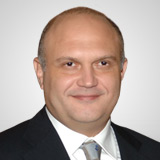To invest in healthcare, it is critical to stay on top of the advancements in medical sciences and understand drug pipelines, addressable markets, and drug patent expirations amid several other industry-specific parameters, notes Rida Morwa, editor of High Dividend Opportunities.
Enter Tekla Capital Management, a team of medical doctors who have decades of investing and portfolio management experience. The best part is that Tekla actively manages its funds with the intent to generate current income for shareholders.
Tekla Healthcare Investors (HQH) has its assets heavily allocated to biotechnology and pharmaceuticals, representing ~73% of the overall portfolio of 152 companies. The fund's top holdings are leading global biopharma names.
HQH has a managed distribution policy, where the CEF will make quarterly distributions at a rate of 2% of the fund's net assets. This means that HQH distributions will vary based on broader market movement. Still, the CEF has a strong track record of filling the pockets of its shareholders with large sums of money, an average of $1,233 per year for a $10,000 investment since inception.
How is it possible to maintain a relatively consistent payout when the price of the holdings varies based on market trends? HQH's distributions come from capital gains, investment income, and return of capital ("ROC"). Moreover, the CEF doesn't employ the use of leverage in its investment strategy.
ROC gets a nasty reputation as investors think the fund manager is returning their investment dollars. While this is true in principle, it is essential to note that if the fund maintains or grows its Net Asset Value ("NAV") over time despite making distributions, you have a sustainable investment in your hands.
HQH has distributed $18.83/share since inception while maintaining a growing NAV. Today, HQH trades at an attractive 6% discount to NAV, presenting a valuable opportunity to lock in a handsome 8.3% forward yield (based on the projected Q3 distribution) and setting you up for growing distributions as the underlying sector recovers.
Tekla Healthcare Opportunities Fund (THQ), also a closed-end fund, provides less emphasis on biotech and adds diversification across additional critical healthcare segments such as providers, services, equipment suppliers, life sciences, medical devices, and REITs, to name a few. The fund's top holdings are leading global pharmaceuticals and healthcare providers.
THQ has maintained a steady $0.1125/share distributed monthly since its inception in 2014. This CEF has paid $10.877/share over eight years while growing its NAV, indicating a highly sustainable active management strategy to deliver value for shareholders.
Since 2017, THQ has relied far less on ROC than its sister fund, HQH. But the deep selloff in the healthcare sector since mid-2021 has resulted in its YTD distribution being almost 58% ROC. It is also important to note that THQ is modestly leveraged by 20% to boost returns to shareholders.
Again, I want to remind investors that ROC isn't a bad thing as long as the fund maintains (or grows) its NAV. Here, THQ is demonstrating sustainability and a high degree of stability in its monthly payments, making it a solid investment during volatile times. THQ trades at a 6% discount to NAV, making it a bear market bargain in an essential sector.


















